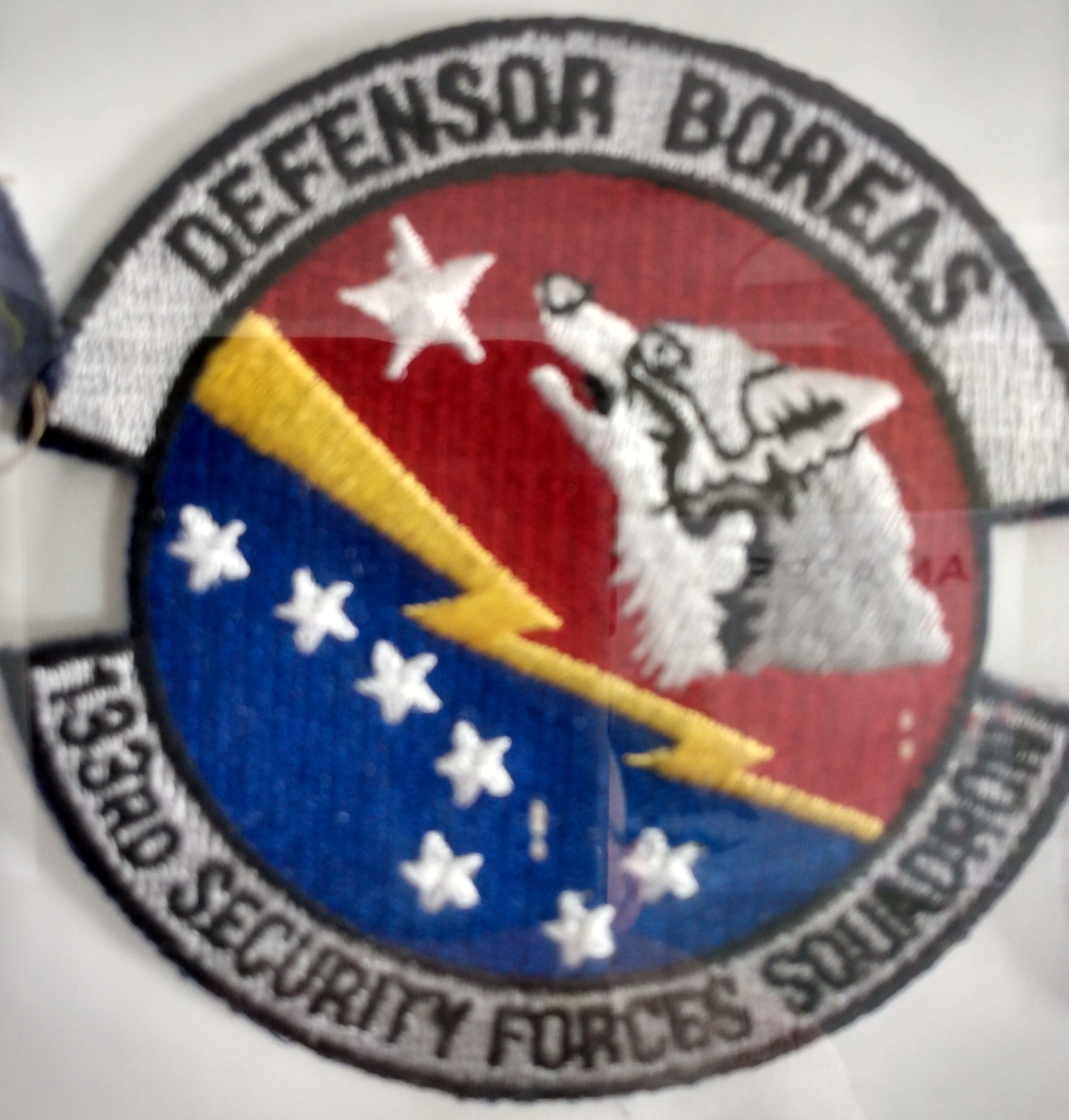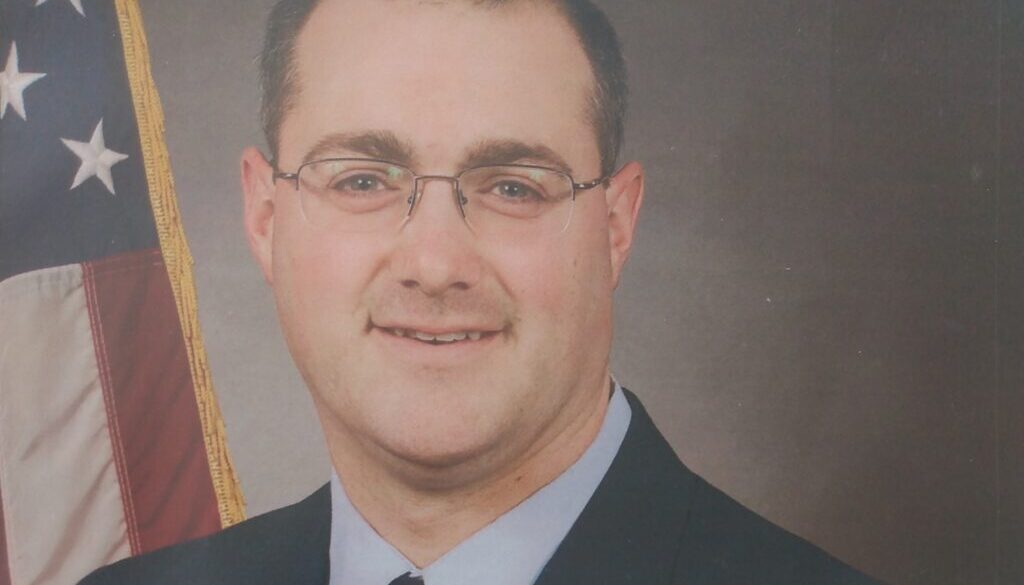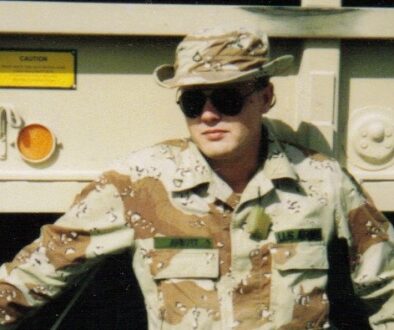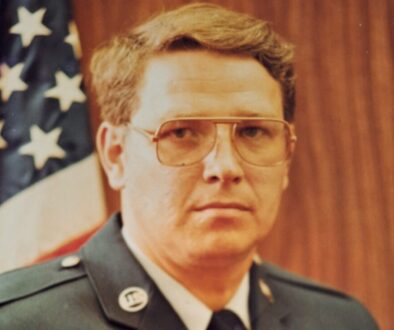Technical Sergeant Mark Himmer, U.S. Air Force – Service is a Family Affair
Many people who serve in the military are inspired to do so by a family member or friend who served before them. Oftentimes the role model is a parent or grandparent, an aunt or uncle, or even a brother or sister. Technical Sergeant Mark Himmer, U.S. Air Force, had two family members in whose footsteps he followed. He also had the unique experience of serving with one of them for fourteen of the fifteen years he spent in the Minnesota Air National Guard. This is Mark’s story.
Mark was born in 1972 in Rochester, Minnesota, the home of the Mayo Clinic, and grew up just west of Minneapolis in St. Louis Park. His parents divorced when he was young, so he spent lots of time with his paternal grandparents on their farm and with his maternal grandparents in small town not far away. At both places, he was constantly in contact with aunts, uncles, and cousins, making his family very close-knit on both sides.
When Mark visited his maternal grandparents, he listened to his grandfather, Joseph Ellis, talk about his experiences in Europe during World War II. His grandfather wouldn’t go into detail because the memories were painful, but Mark learned that he had been a halftrack driver in the 36th Armored Infantry Regiment. All the men he’d become close friends with were killed in combat, with replacement soldiers filling in behind them. As a result, Mark’s grandfather found it hard to make friends with the replacements, fearing they would be lost, too. Mark’s grandfather was his hero and he always looked up to his grandfather for having fought in World War II.
Mark had another powerful influence on his father’s side – Dave Himmer, his father. Mark’s father is a decorated Army veteran from the Vietnam War, who went on to do a stint in the Marine Corps followed by a long career in the Minnesota Air National Guard. Watching his dad progress to Command Chief Master Sergeant, the highest Air Force enlisted rank, couldn’t help but influence Mark in a positive way. Add to that the movie Top Gun, a hit 1986 movie about Navy fighter pilots, and Mark knew the military was for him.
In 1986, though, Mark was still in middle school. He and his sister had both gone to a private elementary school, but when it came time for middle school, Mark’s father gave them a choice. They could go to public school or, if they wanted to continue going to a private school, they had to contribute to the tuition. Mark’s sister chose to shift to a public school, but Mark liked where he was and set out to earn his way. In eighth grade, he took a job at a Burger King. Then, when he transitioned to Benilde-St. Margaret’s High School in 1987, he worked as a janitor at the school over the summer and during the school year after football and track practice. As if that wasn’t enough, he also worked at a grocery store and a local sporting goods store. Although it was tough, Mark considers his dad’s tuition requirement to be one of his great life lessons because earning his way through school gave him the confidence to know that if he worked hard, he could accomplish whatever he set out to do.
As Mark prepared for his senior year of high school in August 1990, Iraq invaded Kuwait and the United States began to deploy military forces to the Middle East to support its ally. The operation, known as Desert Shield, began with a build-up of coalition forces in preparation for retaking Kuwait from Saddam Hussein’s Iraqi forces. With the United States heading toward war, Mark felt duty bound to do his part, so he told his dad he wanted to enlist. His dad, who was now serving in the Minnesota Air National Guard’s 133rd Airlift Wing, recommended Mark check out the Air National Guard before visiting any other recruiters. On January 16, 1991, the U.S. led coalition launched Operation Desert Storm to remove Iraqi forces from Kuwait. Three days later, Mark enlisted in the Minnesota Air National Guard’s delayed entry program.
The delayed entry program meant Mark didn’t have to report to Basic Training immediately – he could complete high school first. He did, however, begin to drill with the 133rd Airlift Wing while he was still in school. On June 27, 1991, two weeks after he graduated from Benilde-St. Margaret’s High School, Mark boarded a plane heading for Basic Training at Lackland Air Force Base in San Antonio, Texas. Air Force training instructors were waiting for the new recruits as soon as they got off the plane, directing anyone they saw with a single carry-on bag and a manila envelope to get in line. From there they went to Lackland Air Force Base by bus and their training began in earnest.
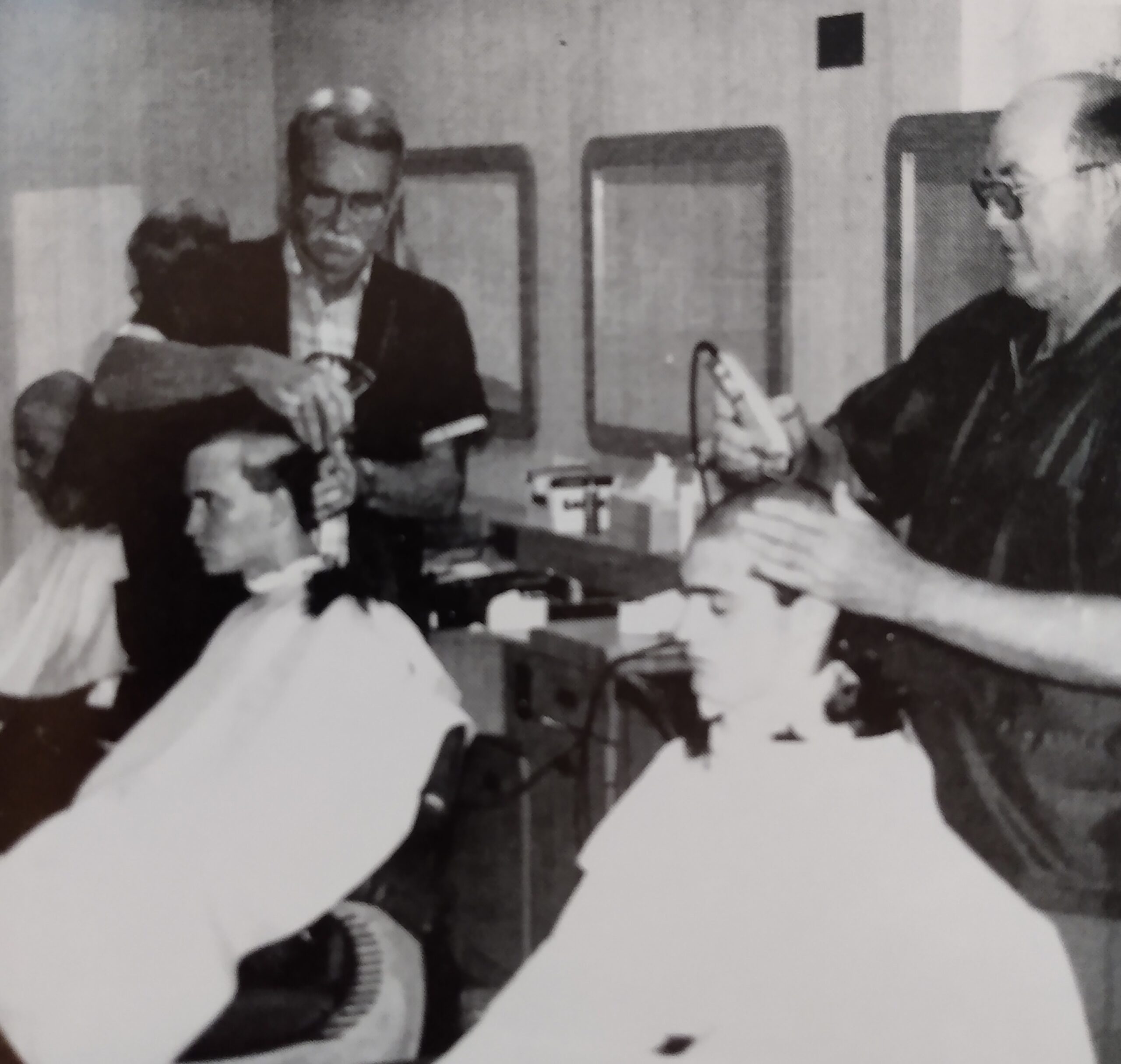
The most memorable aspect of Basic Training for Mark was the oppressive Texas heat. His training unit, known as a “flight”, spent much of the day indoors in classes unless they had to be out in the field. In the classroom the temperature was around 68 degrees. When they would go outside for an activity, the summer sun could crank up the thermostat to a blistering 110 degrees, which was especially difficult for recruits like Mark from the north. When it was simply too hot to train in the sun, the recruits conducted their outside activities under buildings built on stilts to provide some relief from the heat. Mark survived, partly because he was in great shape from running track and playing football in high school. He graduated from Basic Training in August 1991.
The end of Basic Training brought no end to the Texas heat because immediately after graduation, Mark reported to his follow-on Combat Arms Training and Maintenance (CATM) Technical School, located just on the other side of Lackland Air Force Base. There Mark trained to become qualified for his job specialty, CATM Instructor. This meant when he graduated from Technical School, he would be a qualified weapons instructor for the 133rd Airlift Wing, responsible for running the base weapons range and training the men and women assigned to the various units comprising the 133rd Airlift Wing to use their weapons safely and effectively.
Mark loved CATM Technical School because he enjoyed working with weapons. Not only did he have great instructors who prepared him well for his future responsibilities, but he also spent lots of time learning how to instruct others, firing the weapons he was responsible for on the range, and focusing on safety. Despite that focus on safety, sometimes others had different ideas of what safety meant. Mark learned this when some Marine Dog Handlers were training on the range with an M203 grenade launcher. He watched as a Marine put on a flak jacket, a helmet, and thick, heavy razor-wire protective gloves, and then took off running out onto the range. Once he got far enough out, another Marine fired an M203 training round in the direction of the well-clad Marine, who somehow managed to catch the training round in his gloves. When the round exploded, it spewed fluorescent orange spotter powder all over the Marine. Mark chalked the incident up to differing service cultures on safety.
After graduating from CATM Technical School on his birthday, October 15th, Mark reported to his unit, the 133rd Security Forces Squadron of the 133rd Airlift Wing, in November 1991. The unit drilled at the Minneapolis-Saint Paul Joint Air Reserve Station, located at the Minneapolis-Saint Paul International Airport. The Wing operates eight giant four-engine C-130 “Hercules” transport aircraft, and the 133rd Security Forces Squadron provides security for the aircraft and associated buildings, equipment and personnel.
Although Mark was just an Airman Basic (E-1), he quickly learned how much trust his unit placed in him. During his first week at the base range, a colonel was flagging people with his .38 caliber revolver. Mark took him aside, unloaded his weapon, and politely indicated he was finished on the range for the day because he was endangering the others training on the range. The colonel protested, saying he would take up the matter with the commanding general. A non-commissioned officer interceded and told the colonel that on the range, Airman Basic Himmer acted with the authority of the commanding general and that was the way it had to be. Mark never heard anything from the colonel again.
As with every Air National Guard member, Mark’s commitment involved drilling one weekend each month and two full weeks each year, although the actual commitment often exceeded that minimum amount. Mark trained Wing and base personnel on a wide range of weapons, including the .38 caliber revolver; the M9 Baretta pistol; the M16A2 and M4 rifles; the 12-guage shotgun; and the M60, M240B, and M249 machine guns. On his off-duty time, he began studying to be a medical lab technician and in 1995 became engaged to his fiancé, Joy. He also continued to progress in the Air National Guard, promoting to Staff Sergeant (E-5) on February 1, 1996. At that point, he decided to change his job specialty to C-130 loadmaster because he wanted to fly with the Wing’s C-130s. That meant attending C-130 Loadmaster School with the 189th Airlift Wing at Little Rock Air Force Base in Little Rock, Arkansas.
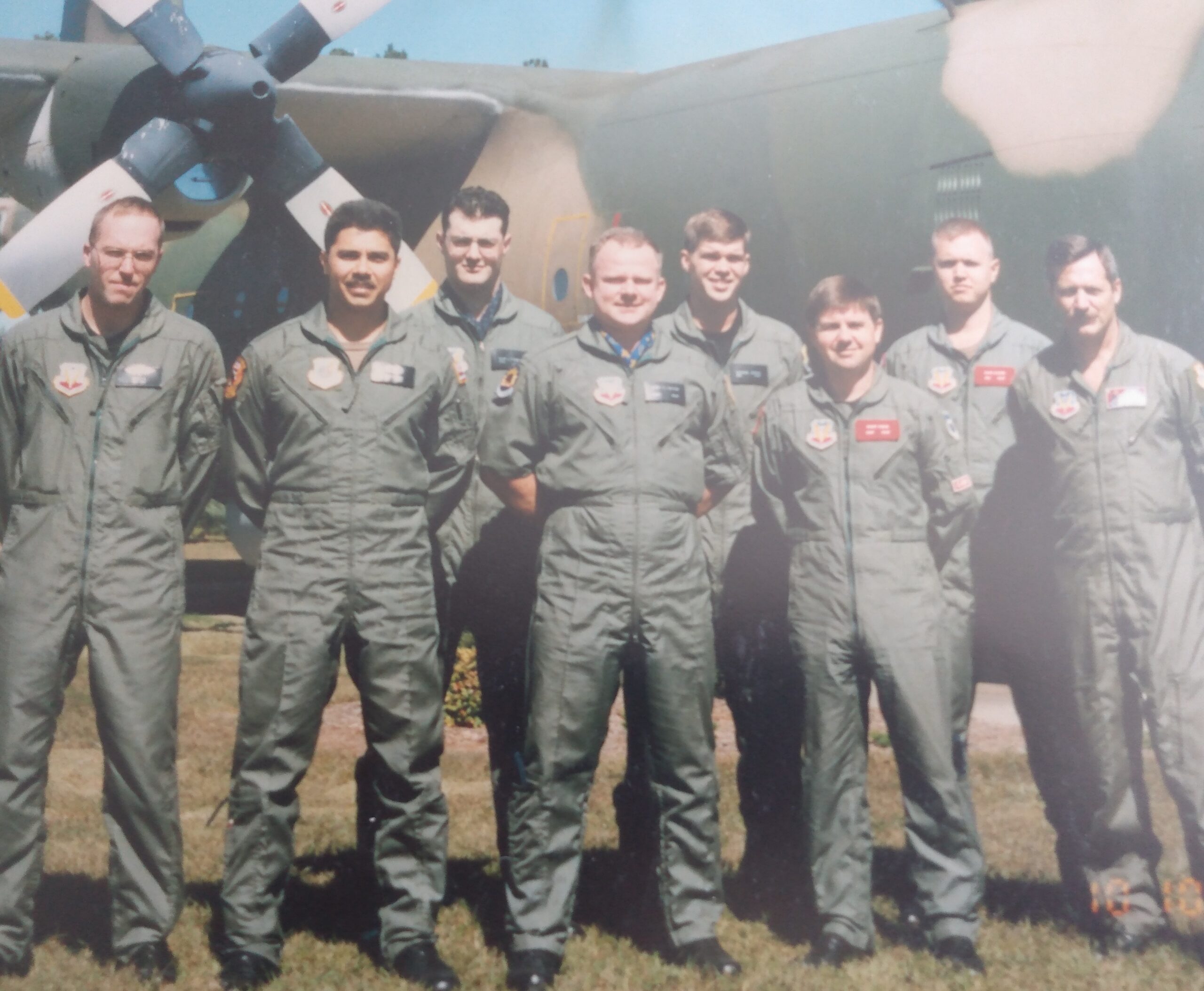
Loadmaster School was the toughest training Mark ever experienced. The course began with a video showing a real C-130 loading mishap that killed the plane’s entire crew, driving home the point that if they didn’t do their job right, people could die. The grading scale reflected the serious nature of the work, where it often took a perfect score of 100% to pass many portions of the coursework. Mark also had to learn to calculate the weight and balance measurements by hand for stowing cargo on the plane, as improperly distributing the cargo and passengers in the cargo bay or misjudging the plane’s fuel burn rate could prove catastrophic.
The high point of the school for Mark was his C-130 “familiarization” ride. During this ride, the pilot flew their C-130 to 10,000 feet and Mark’s instructor lowered the big cargo loading ramp at the rear of the airplane. Wearing a parachute and a harness attached to the floor, Mark walked to the outer edge of the ramp. After a few seconds, the pilot pointed the nose of the aircraft upward, allowing Mark to hang in midair behind the plane until he was slowly brought back on board. Mark found the experience exhilarating.
Mark completed the Basic Loadmaster Course in November 1996 and reported to his new unit, the 109th Airlift Squadron, which was the C-130 squadron located on the Minneapolis-Saint Paul Joint Air Reserve Station. Once there, he learned the time-commitment expected of him would greatly exceed what he had been led to believe, including three to five nights per week. After talking this over with Joy and his father, Mark approached his previous unit, the 133rd Security Forces Squadron, and found his old job as a Combat Arms Supervisor/Security Forces Craftsman had not been filled and they wanted him back. Accordingly, he disenrolled from the Loadmaster program and began drilling again with the 133rd Security Forces Squadron.
Mark married Joy in October of 1997 and continued with his Minnesota Air National Guard duties. In March 1999, he deployed with his unit to Anderson Air Force Base in Guam to participate in Operation Tandem Thrust, a large joint military exercise involving forces from the United States, Australia, and South Korea in the Western Pacific. He did similar deployments later in 1999 and 2000 to Puerto Rico, Costa Rica, and Colombia in support of Operation Coronet Oak (providing security for C-130s participating in counter-drug operations) and to Curacao in support of Operation Coronet Nighthawk (providing security for F-16s from the Duluth, Minnesota, Air National Guard base conducting counter-drug operations).
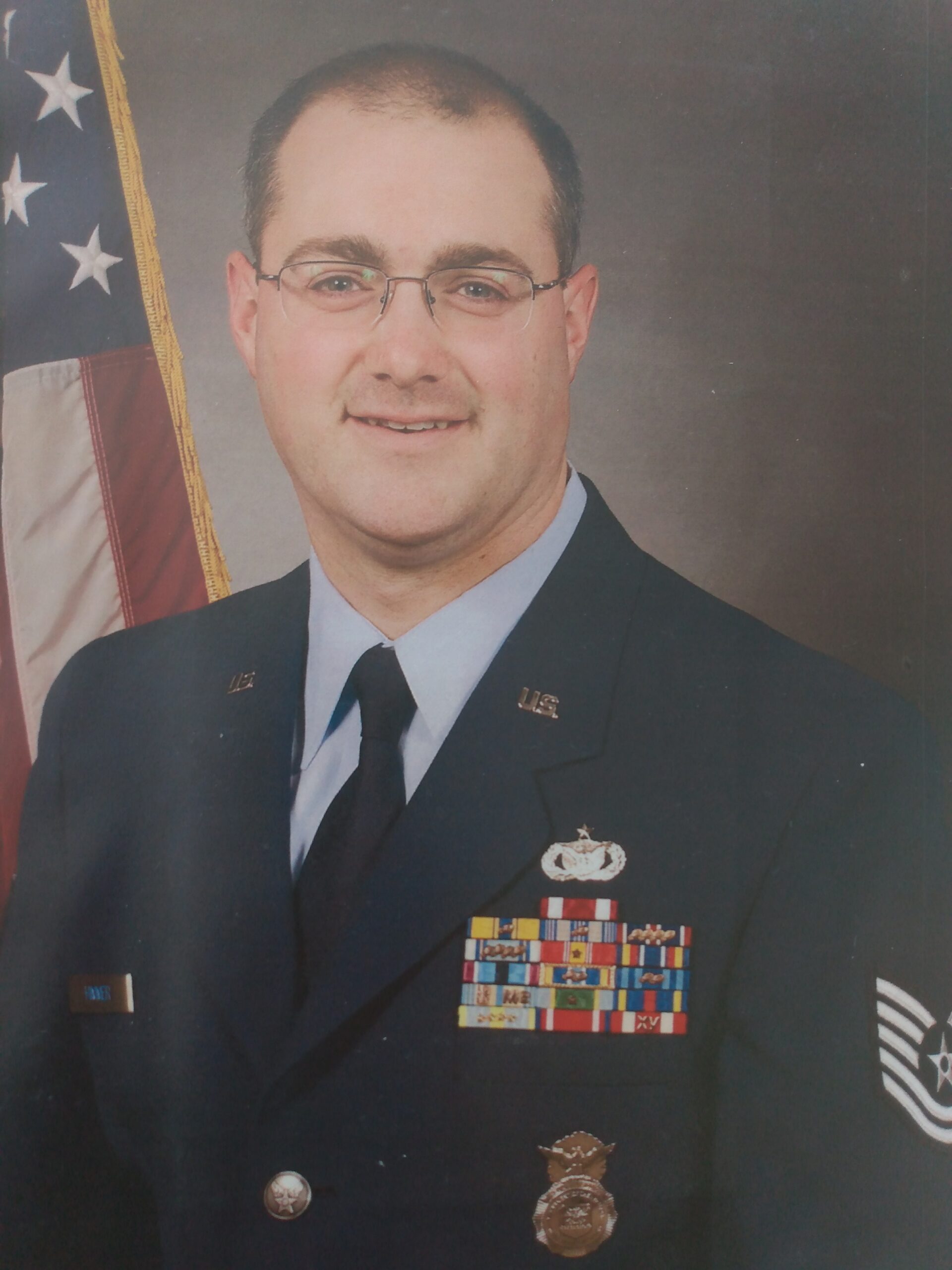
In February of 2000, Mark was approved for a full-time Active Guard/Reserve (AGR) position with the 133rd Security Forces Squadron, meaning he was now on active duty with the squadron on a full-time basis. He was also offered an opportunity he could not refuse. The Air Force had a new security program known as Phoenix Raven, where specially trained security personnel flew on transport aircraft like the 133rd Airlift Wing’s C-130s whenever their missions took them to high-risk areas. Although Mark did not have the training to be officially designated as Phoenix Raven qualified, he did have the training and experience to serve as an apprentice under a Phoenix Raven qualified supervisor whenever the mission required two persons instead of one.
During a Phoenix Raven mission in the spring of 2000, Mark had a harrowing experience. In his capacity as an apprentice, he and his supervisor flew on a C-130 from Minnesota to Georgia and then on to Costa Rica. After allowing for the necessary crew rest (and doing some whitewater rafting), the mission was to continue into Colombia. However, at this point a second C-130 joined the mission. To accommodate the change, Mark and his supervisor split up, one providing security for each aircraft. As Mark’s plane was en route to Bogota, the word was passed to the crew to change into civilian clothes because a bounty had been placed on U.S. servicemembers by the various drug cartels in South America.
After Bogota, the two C-130s continued to a dirt airstrip near Colombia’s border with Venezuela. Mark’s plane landed first and Mark met with the individual responsible for airstrip security, a special forces type wearing a cowboy hat and boots. He asked Mark whether the planes would be staying overnight. Mark asked why and the man told him they were sure to take small arms fire and mortars overnight if they stayed. When Mark relayed that to the aircraft commander, he told Mark they would definitely be “wheels up” before dark.
Mark then started walking down a path leading to a sandbagged defensive position. He had to go to the bathroom and was looking for an appropriate place to do so. As he was walking, someone sped toward him on a minibike. Mark prepared to draw his weapon, but soon realized the individual was part of the Colombian paramilitary force protecting the airstrip. With the man speaking broken English and Mark speaking broken Spanish, Mark learned he was walking toward a minefield. In fact, there was a “Bouncing Betty” mine just twenty feet further down the path he was walking on. This close call made a lasting impression on Mark, as he realized if he had taken a few more steps, he might not have made it home alive. The mission was one of two times Mark qualified for hostile fire pay.
Once back in Minnesota, Mark and his supervisor prepared an in-depth security profile for the Colombian airfield, including a detailed sector sketch. The profile received national attention and served as a benchmark for future National Imagery and Mapping Agency security surveys.
Over the summer of 2001, Mark prepared with his unit to deploy to Incirlik Air Base in Turkey to fill in for an active-duty unit while its personnel took leave. Mark’s unit was scheduled to depart on September 12th, so Mark was at home on September 11th packing when he saw terrorists crash hijacked airliners into the World Trade Center and the Pentagon. He immediately called the squadron’s Desk Sergeant, who told him to report to the squadron and to tell his wife he did not know when he would be coming home.
On his way to the base, Mark saw F-16s flying combat air patrol overhead. Once at the squadron, he learned everyone assigned to the base was being recalled. Despite the chaos, Mark’s unit continued preparations to deploy to Incirlik, which it did on September 15th. Once there, Mark and the rest of his unit were told to drop their gear on the cots in their tents (not on the floor where scorpions might crawl into it) and report for an immediate briefing. At the briefing, they were informed they were in lockdown and would remain in Incirlik for a year because every person would be needed to support future operations. After the briefing, Mark called his dad and his wife to give them the news. It was a particularly difficult call for Joy because she had just given birth to their first daughter in May. Now she was going to be on her own for a year with their new baby girl.
After a week in Turkey, the situation changed. Mark was told the Minnesota Air National Guard leadership had pressed to have its AGR personnel like Mark return to keep their units functioning, so Mark and the rest of the 133rd Security Forces Squadron returned to Minneapolis in early October. This was the second mission for which Mark qualified for hostile fire pay and was a precursor to Operation Enduring Freedom, which involved U.S. forces engaged in combat operations in Afghanistan and elsewhere in the Global War on Terrorism.
Mark subsequently deployed to MacDill Air Force Base in Tampa, Florida, from October through December 2001 as a squad leader and again from May through August 2002 as the team chief. These last two deployments were in support of Operation Noble Eagle, which involved the mobilization of Guard and Reserve personnel to provide security for military installations and potential terrorist targets across the United States. During one of these deployments, Mark received a General Tommy Franks’ challenge coin in recognition of his work revamping the base Armory’s personally owned weapons program. General Franks, who was the four-star Commanding General of the U.S. Central Command directing U.S. operations in the Middle East, saw Mark’s work at the Armory and instructed his staff to award Mark the coin.
In the summer of 2002, Mark began a project that would have a lasting impact on his unit. Having always been interested in unit heraldry and patches, he received permission from his unit and Wing leadership to design a unit patch for the 133rd Security Forces Squadron. Working closely with his wife (a graphic artist), they designed a patch and got it approved for use by the Army Heraldry Office on October 6, 2004. The patch includes across the top a Latin motto selected to represent the squadron: “Defensor Boreas”, which means Defenders of the North.
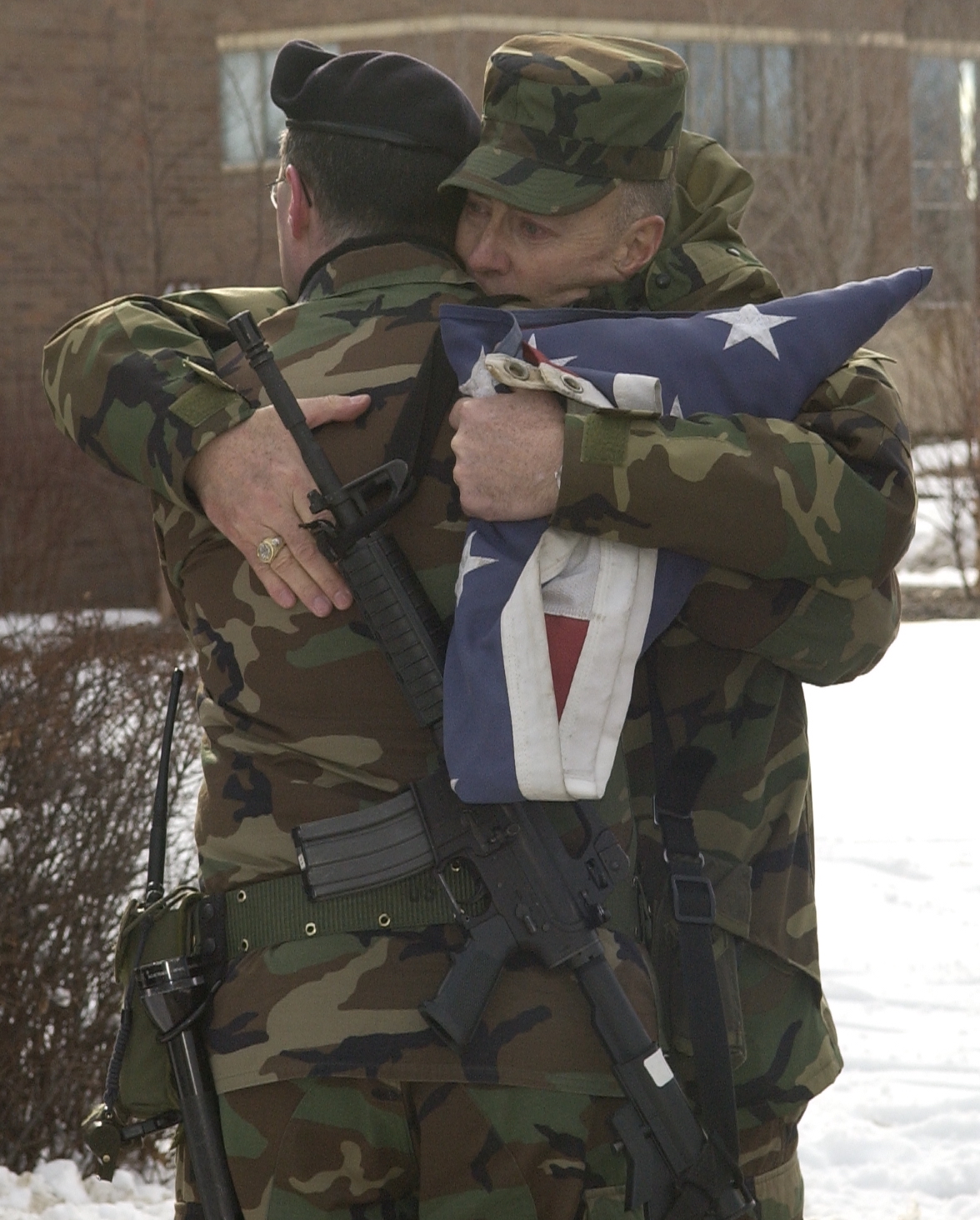
Mark continued on active duty through September 2005. This gave him the opportunity to participate in his dad’s retirement ceremony that same year. His dad’s retirement was a big event for the 133rd Airlift Wing because his dad was the Command Chief Master Sergeant, the senior enlisted leader in the Wing and on the base. Mark spoke at the ceremony and was able to give his dad a hug at the end before heading back to his squadron for duty. Mark was honored to serve with his father, who instilled in him the importance of always doing the right thing, no matter what the cost. He also gave Mark three rules to live by which proved their value to Mark time and time again: always complete required training and qualifications, don’t let opportunities slip by, and above all, take care of your people.
On January 18, 2006, Mark left the Minnesota Air National Guard. At the time of his separation, he was the non-commissioned officer-in-charge of the Security Forces and Base Armory, responsible for making sure deploying Wing and base personnel had serviceable weapons to support their assignments. He was also a member of the base Honor Guard, performing at ceremonies, parades, funerals, and recruiting events.
After his separation, Mark returned to being a full-time civilian. Having earned his bachelor’s degree in Healthcare Management from Touro University International in September 2004, he began a career in healthcare. He currently works for United Health Group Optum as a project coordinator. He and his wife Joy have three daughters and are enjoying life in suburban Minneapolis.
Despite being a full-time civilian, Mark keeps his military ties alive through his service in the American Legion and the Veterans of Foreign Wars (VFW). In fact, he is a life member of the VFW and Senior Vice Commander of VFW Post 7051 in Crystal, Minnesota. He has also served for many years as a Minnesota Youth Firearms Instructor for the Minnesota Department of Natural Resources, teaching youth how to use firearms safely and responsibly.
Mark’s military awards include the Meritorious Service Medal; the Air Force Commendation Medal (second award); the Air Force Achievement Medal (second award); the Air Force Outstanding Unit Award (fifth award); the Air Force Reserve Meritorious Service Medal (fifth award); the National Defense Service Medal (second award); the Humanitarian Service Medal; the Air Force Expeditionary Service Ribbon with Gold Border (third award); the Armed Forces Reserve Medal with 10-year bronze hourglass device, “M” for mobilization and “2” for two deployments; the Air Force Expert Ribbon (rifle and pistol); the Air Force Basic Training Ribbon; the State of Minnesota Activation Ribbon, and the State of Minnesota Good Conduct Ribbon (XV for fifteen years of service).
Voices to Veterans is proud to salute Technical Sergeant Mark Himmer, U.S. Air Force, for his fifteen years of service in the Minnesota Air National Guard. Over that period, Mark trained countless individuals and deployed around the world to protect U.S. Air Force assets and personnel. Even now, he continues to serve his community through the American Legion and VFW and by teaching gun safety to Minnesota’s youth. We thank him for all he has done and wish him fair winds and following seas.
If you enjoyed Mark’s story, please sign up for the Voices to Veterans Spotlight monthly newsletter by clicking here. Once each month, you’ll receive a new written veteran’s story and a new podcast directly in your mailbox. Best of all, it’s free and you can unsubscribe at any time.
